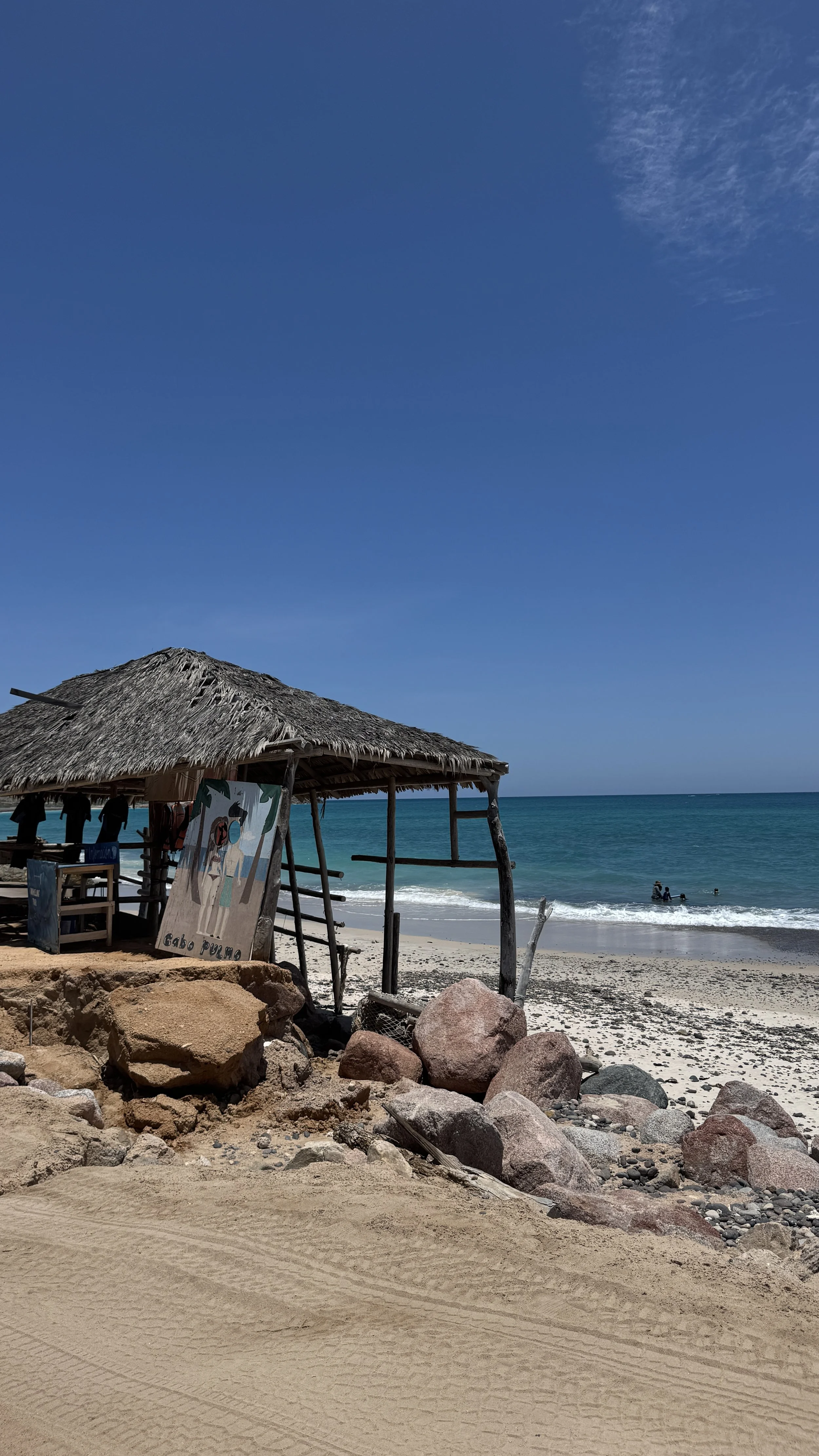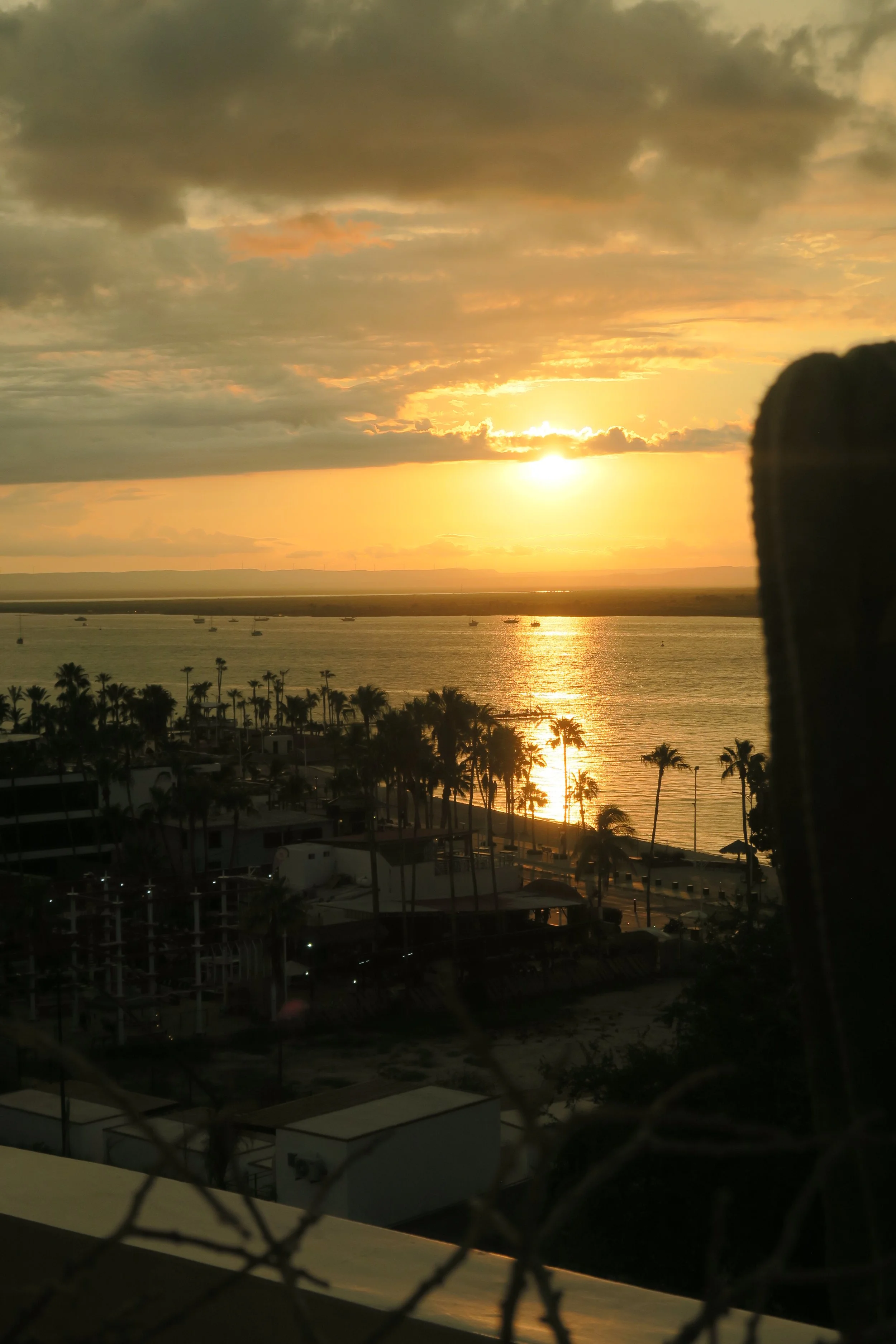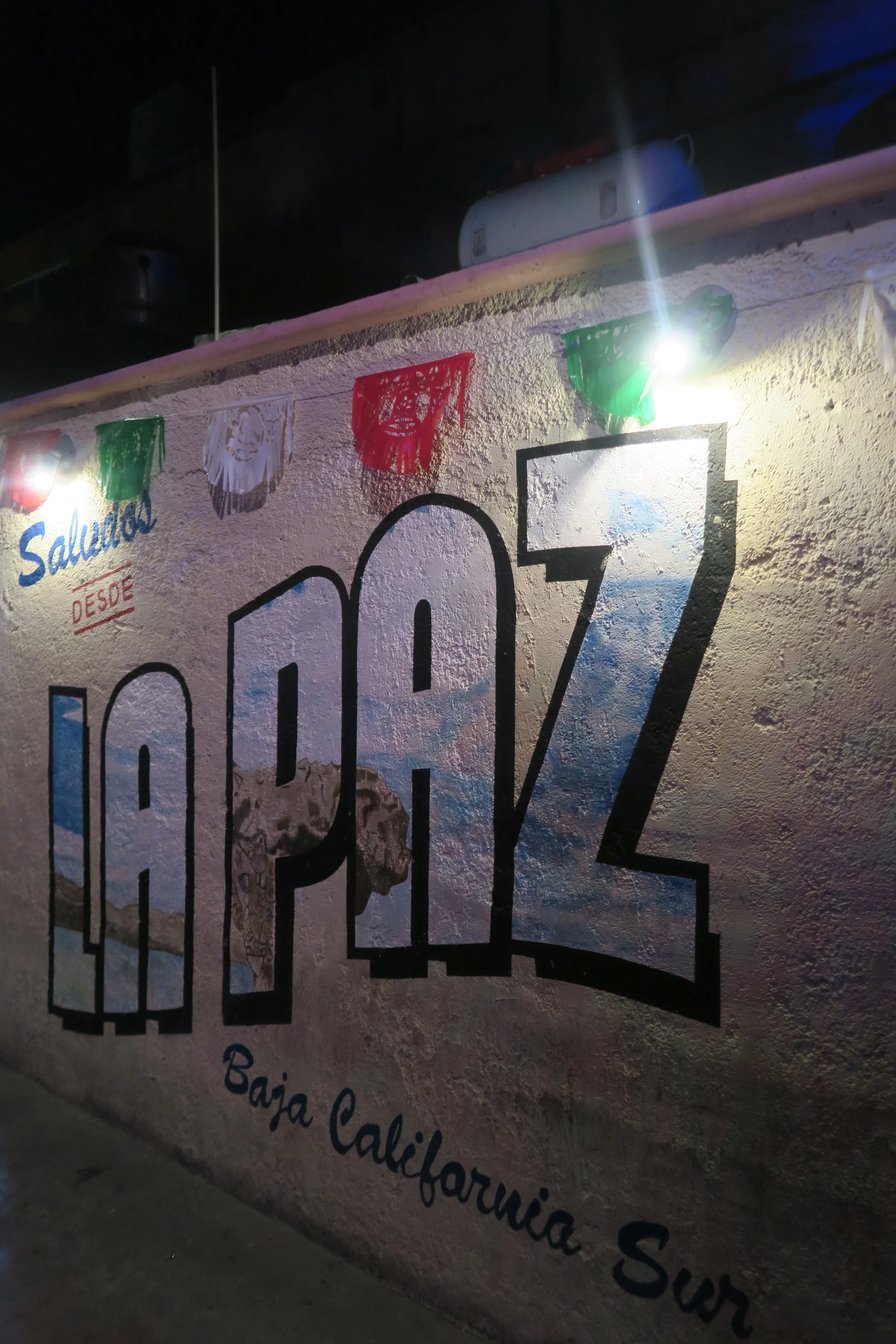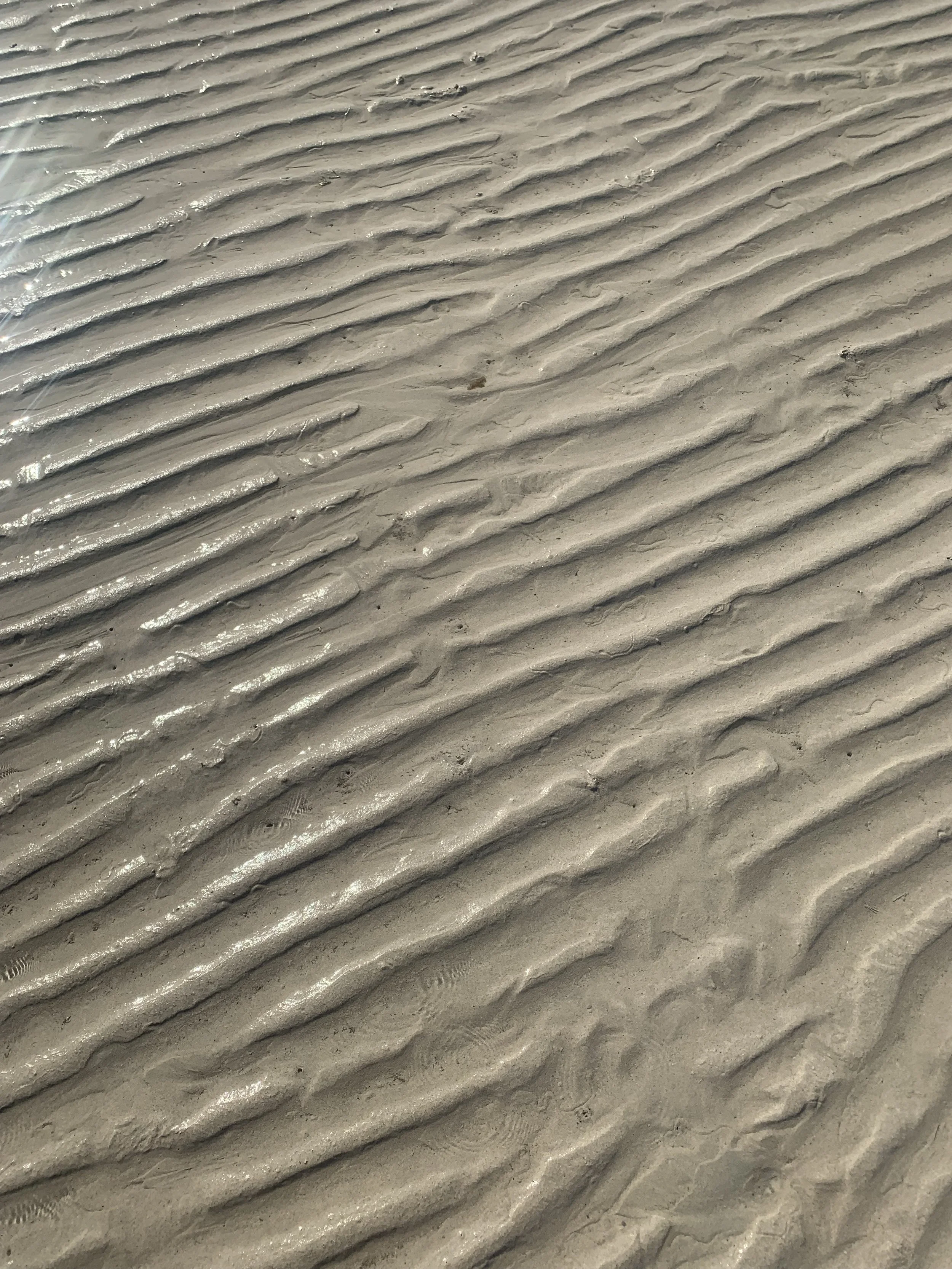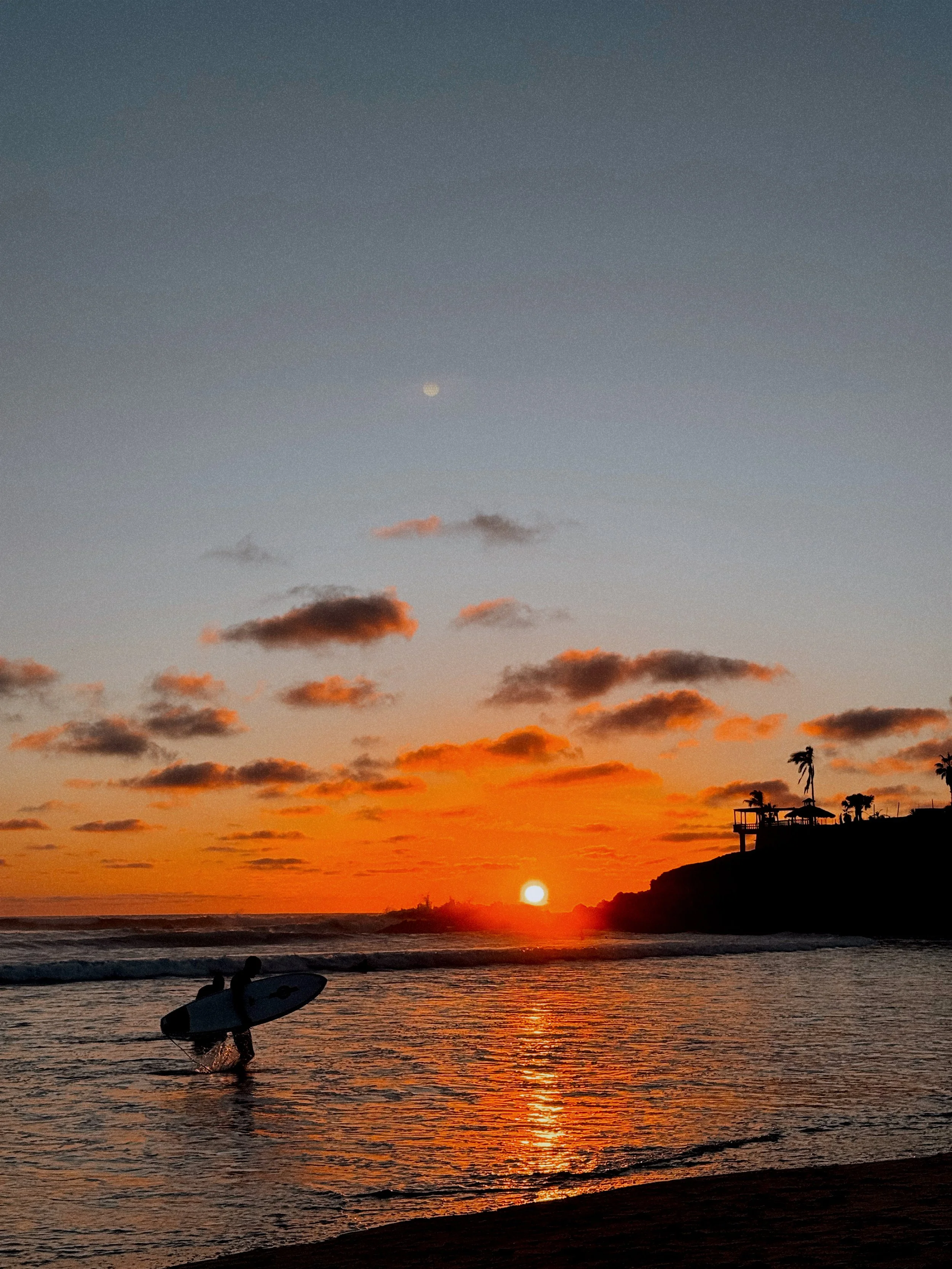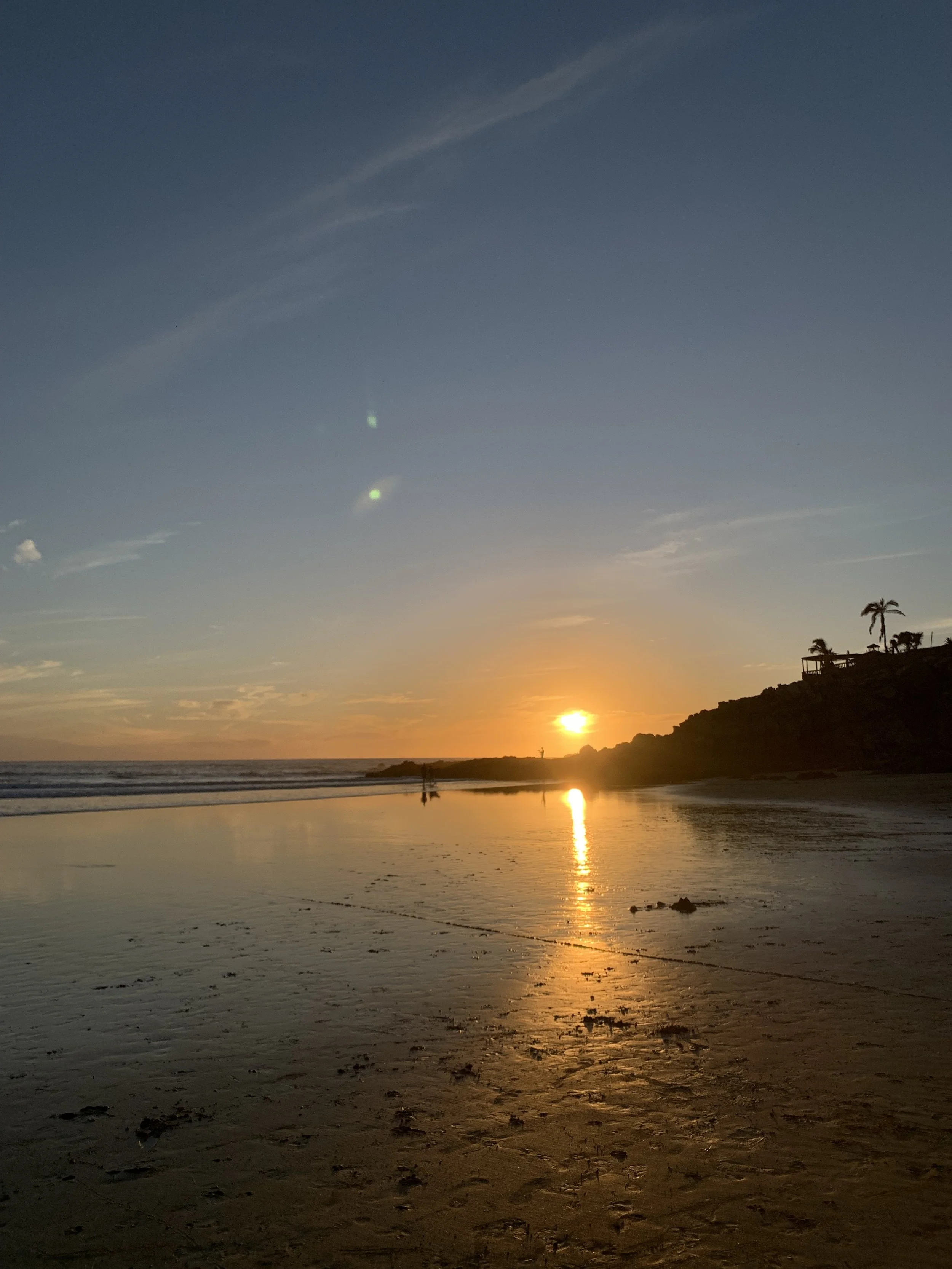“The Must of the South Loop”
Introduction
The first time I drove through Baja, I didn’t have a plan — just a van, my playlist, and that quiet craving to feel alive again.
Somewhere between the desert and the sea , I realized how rare it is to find places that invite you to slow down. Baja does that — it doesn’t ask for much, just your presence.
Here, the desert meets the ocean in a way that doesn’t make sense until you see it — miles of nothing and everything all at once. Mornings taste like coffee and salt and every road feels like it’s leading you closer to yourself.
If you’ve ever dreamed of waking up by the sea, driving through cactus fields, or swimming in turquoise bays — this road trip is for you. Whether it’s your first time in Baja or your fifth, I promise you’ll still find moments that make you pull over just to breathe.
“The greatest adventures are often found in the simplest moments.”
The Basics
Baja California Sur stretches between two oceans — the wild Pacific and the calm Sea of Cortez — and somehow carries the energy of both: bold and peaceful at once.
My favorite months to explore Baja are October through May, when the sun is warm, the nights are cool, and the sea is clear enough to see your reflection. But I have to say visiting Baja California Sur during hurricane season (June-October) reveals a unique beauty. The heavy rains transform the desert into a vibrant green landscape, a stunning contrast to its usual hues. This verdant metamorphosis offers a fresh, immersive perspective on nature's powerful cycle.
Your journey begins in San José del Cabo, where Vanbaja’s base is conveniently close to the airport. From there, the route flows naturally north — following the coastline, through sleepy fishing villages and desert landscapes that shift colors with the light.
Expect drives that will make you fall in love with nature, silence, Wi-Fi-free days, and nights where the stars feel close enough to touch.
Day 1 – Cabo Pulmo: Where It All Begins
There’s something sacred about starting a trip where the land ends. Cabo Pulmo feels raw and real — a small fishing village turned marine sanctuary that quietly protects one of the oldest coral reefs in North America.
When you dive here, the water wraps around you like glass. You see colors you didn’t know existed underwater — yellows, blues, silvers flickering in the sunlight. It is crazy. I remember floating beside a school of jacks, the ocean humming softly in my ears, and thinking: this is why I came.
You don’t need much here. A snorkel, a towel, maybe a cold beer from the local tienda after your swim. Camping isn’t allowed inside Cabo Pulmo National Park, but there are nearby spots where you can stay close to nature. And when you’re ready to explore its vibrant reef, our trusted partners at Cabo Pulmo Travel will guide you into the heart of this marine sanctuary.
Local Tip: Have lunch at “Tacos & Beer Cabo Pulmo.” Their fish tacos taste like they’ve absorbed the ocean itself. And if you ask nicely, someone will point you to a hidden cliff spot to watch the sunset.
Day 2 – Santiago: The Oasis You Didn’t Expect
After the salt and sun of Cabo Pulmo, Santiago feels like a small oasis hidden in the mountains. Palm trees replace cacti, and freshwater pools take the spotlight.
You can spend the day exploring Cascada Sol de Mayo or relaxing in the hot springs at Las Termas Los Encinos — both are worth the stop. Afterward, grab a coffee or breakfast at TOSTADO Café, my favorite local spot, before heading back on the road.
There’s also a little family-run place nearby that serves fresh mango ice cream — simple, sweet, and unforgettable. It’s the kind of detail you don’t find on Google Maps.
Cascada Sol de Mayo
A place to slow down and enjoy the fresh water
Day 3 – La Paz: Slow Rhythms and Sunset Rituals
After a few days off-grid, La Paz feels like re-entering civilization — but just enough. The malecón comes alive at sunset, with families walking, street vendors frying churros, and musicians playing under pink skies.
I love watching locals end their day here — there’s no rush, no noise, just people being people.
Stop for dinner at Casamarte, Quemadero, or Azotea — each has its own flavor of Baja magic. And if you stay overnight, don’t miss a morning paddle at Balandra Beach, where the water is so still it looks like glass.
Just remember that entry to Balandra requires an online reservation or a small fee at the gate, as it’s a protected area with limited access. Plan ahead — it’s absolutely worth it.
Baja teaches you that peace isn’t found in silence — it’s found in simplicity.
Day 4 – Balandra & Espíritu Santo: Where Time Stands Still
It’s hard to describe Balandra Beach without sounding cliché — because yes, the water really is that blue. The kind that makes you squint even with sunglasses on. Wade out a few meters and the water still barely reaches your knees.
Take a slow morning here, then hop on a boat to Espíritu Santo Island with Daniel — one of Vanbaja’s favorite local guides. He knows every curve of that island and will likely share stories of dolphins, sea lions, and the quiet magic of this UNESCO-protected place.
I remember swimming with sea lions here — playful, curious, wild. It’s impossible not to smile underwater when a sea lion looks you in the eye.
Bring snacks, sunscreen, and no expectations. You’ll come back salty, sun-kissed, and softer somehow.
Day 5 – Todos Santos & Pescadero: Art, Surf, and Cafecito Mornings
The road from La Paz to Todos Santos feels endless in the best way — golden fields, winding turns, and that comforting feeling that something good awaits.
Todos Santos is a Pueblo Mágico that lives up to its name: colorful, artistic, full of little surprises. You’ll find surfboards leaning against gallery walls, and people who came for a weekend and never left.
Grab a coffee at Doce Cuarenta or Agricole, then wander the cobblestone streets without a plan. At sunset, drive down to San Pedrito Beach — where campers, surfers, and dreamers gather by the ocean.
Sleep here if you can. You’ll hear the waves all night, and if you’re lucky, the laughter of strangers who feel like friends.
Day 6 – Cerritos Beach: Salt, Surf, and Doing Nothing
If Baja had a soundtrack, Cerritos Beach would be the soft acoustic version.
It’s one of those places where time slows down without you noticing — surfers gliding into small waves, locals selling coconut water, kids playing in the shore foam.
I spent an entire afternoon here doing nothing but watching the tide come and go. Sometimes that’s all the adventure you need.
If you want to surf, rent a board from the local stands. If not, just bring your towel, a book, and maybe a taco or two from the food trucks nearby.
Baja doesn’t ask for plans. It just asks that you stay a little longer than you intended.
Day 7 – Back to San José del Cabo: The Circle Closes
Every journey has that bittersweet last morning. The drive back to San José del Cabo feels slower — not because of the road, but because part of you doesn’t want it to end.
Before returning the van, stop at Ruba’s Bakery for coffee and a pastry. It’s one of those places where everyone seems to know each other, and the air smells like butter and goodbyes.
Walk around town if you can — art galleries, cobblestone streets, and local shops that remind you how alive Baja is beyond its landscapes.
And then, when you finally hand over the keys, take a deep breath. You did it — seven days, hundreds of miles, and more sunsets than you can count.
Optional: Extend your trip. Stay longer in the spots that spoke to you. That’s the beauty of vanlife — you don’t have to leave until you’re ready.
Vanlife Notes from the Road
Camping: Wild camping is allowed in most areas. Still, check with locals or Vanbaja’s team — they’ll point you to spots with safety, shade, and ocean views.
Safety: Baja is calm and kind. Just avoid driving at night and always greet people — it goes a long way here.
Gear: Bring your snorkel, paddleboard, and reef-safe sunscreen. Starlink helps if you need connection — but disconnection is part of the charm.
Respect Nature: Don’t drive over dunes or dry plants. Leave no trace. Baja gives you so much — give her care in return.
Flavors of Baja
Baja’s food tastes like sunshine and saltwater.
Along the Pacific coast, fish tacos are non-negotiable — crispy, cheap, and perfect.
In La Paz, try chocolate clams and ceviche de sierra. In Santiago, mango ice cream will remind you of childhood.
If you pass through Loreto, don’t skip machaca — dried beef cooked with eggs and tortillas, the kind of breakfast that makes you feel invincible.
And wherever you eat, talk to people. Baja meals always come with stories.
Good to Know
Gas: Around $1.40 USD per liter. Fill up whenever you can.
Roads: Main highways are paved; secondary ones can be sandy or rough — that’s part of the fun.
Connectivity: Spotty in remote areas — download Maps.me and IOverlander.
Money: Bring pesos, especially for small towns and beach camping.
Useful Apps: Google Maps, WindyApp, Maps.me, IOverlander.
Final Reflection
Baja California Sur teaches you to slow down — to let the road lead instead of rushing ahead. It teaches you that beauty doesn’t need filters, and peace doesn’t come from silence but from presence.
As we packed the van and headed back to San José del Cabo, I realized Baja doesn’t end when the trip does. It stays in you — in the way you watch sunsets now, in how you pause before a long drive, in that quiet urge to live a little slower.
To be honest, a seven-day trip or a single blog isn’t enough to discover everything this southern route holds. If you decide to travel with Vanbaja, ask one of their team members about the hidden places we only share with our travelers.
If you ever find yourself here, take your time — Baja rewards the ones who don’t rush her.






